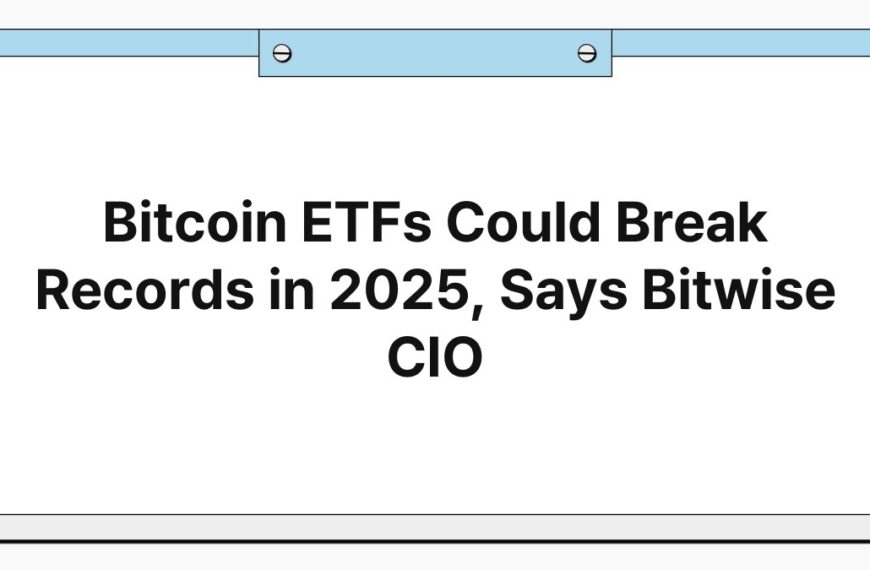[K-Bridge/Samuel] Bitcoin and Ethereum have recently experienced a significant surge, leading to the liquidation of $900 million in crypto shorts within just 24 hours.
This rapid price movement has caught the attention of investors and analysts alike, raising questions about the underlying factors contributing to this phenomenon.
The sudden volatility in the cryptocurrency market has sparked discussions about potential future trends and the implications for both short-term traders and long-term holders.
Understanding the dynamics behind this surge can provide valuable insights for anyone interested in the cryptocurrency landscape.
This article will delve into the reasons behind the recent price movements, the impact on the market, and what this means for the future of Bitcoin and Ethereum.
Factors Behind the Surge
Market Sentiment and Investor Behavior
The recent surge in Bitcoin and Ethereum prices can largely be attributed to shifting market sentiment.
Positive news, such as increased institutional adoption and favorable regulatory developments, has led to a renewed interest among investors.
Many are now viewing cryptocurrencies as a hedge against inflation and economic uncertainty.
This shift in perception has encouraged more individuals and institutions to enter the market, driving up demand and prices.
Additionally, retail investors have become increasingly active, seeking to capitalize on the upward momentum.
Social media platforms and online forums have played a crucial role in amplifying this enthusiasm.
The collective behavior of investors can often lead to rapid price increases, as seen in this recent spike.
Technical Indicators and Trading Patterns
Technical analysis has also played a significant role in the recent price movements of Bitcoin and Ethereum.
Traders often rely on chart patterns and indicators to make informed decisions.
The breakout above key resistance levels has triggered buy signals, prompting traders to enter the market.
This influx of buying pressure can create a self-reinforcing cycle, further driving up prices.
Moreover, the liquidation of short positions has contributed to the upward momentum.
When prices rise sharply, those who have bet against the market are forced to close their positions, leading to additional buying pressure.
This phenomenon can create a short squeeze, resulting in rapid price increases, as witnessed in the last 24 hours.
External Economic Factors
Global economic conditions have also influenced the recent surge in cryptocurrency prices.
Concerns over inflation and economic instability have prompted many investors to seek alternative assets.
Cryptocurrencies, particularly Bitcoin, are often viewed as a store of value during turbulent times.
As traditional markets experience volatility, the appeal of digital assets has grown, leading to increased investment.
Additionally, developments in the financial sector, such as the introduction of Bitcoin ETFs and growing acceptance of cryptocurrencies by major companies, have further legitimized the market.
These factors have contributed to a broader acceptance of cryptocurrencies, attracting both institutional and retail investors.
Impact on the Crypto Market
Increased Volatility
The recent surge has resulted in heightened volatility within the cryptocurrency market.
While price increases can be exciting for investors, they often come with increased risk.
Rapid fluctuations can lead to significant losses for those who are not adequately prepared.
Understanding the nature of volatility is essential for anyone participating in the crypto market.
As prices soar, it is crucial for investors to remain cautious and consider their risk tolerance.
The potential for rapid gains can be enticing, but the accompanying risks must not be overlooked.
Strategies for managing risk, such as setting stop-loss orders and diversifying portfolios, are essential for navigating this volatile landscape.
Long-Term Implications
The recent price movements may have long-term implications for the cryptocurrency market.
The increased interest from institutional investors could signal a shift towards greater acceptance and integration of cryptocurrencies into traditional finance.
This could lead to more stable price movements in the future as the market matures.
Furthermore, the ongoing development of blockchain technology and decentralized finance (DeFi) platforms is likely to influence the future of cryptocurrencies.
As these technologies evolve, they may open up new opportunities for innovation and investment, shaping the landscape of digital assets.
Regulatory Considerations
As the cryptocurrency market continues to grow, regulatory scrutiny is expected to increase.
Governments and regulatory bodies are becoming more aware of the potential risks and benefits associated with digital assets.
This could lead to the introduction of new regulations aimed at protecting investors and ensuring market integrity.
While regulatory developments can create uncertainty, they can also foster a more stable environment for investors.
Clear guidelines may encourage greater participation from institutional investors and traditional financial institutions, further legitimizing the cryptocurrency market.
The Role of Short Positions
Understanding Short Selling
Short selling is a trading strategy that involves betting against an asset’s price.
Traders who engage in short selling borrow assets and sell them with the intention of repurchasing them at a lower price.
If the price rises instead, these traders face losses and may be forced to close their positions, leading to liquidations.
In the context of the recent surge, many short sellers were caught off guard by the rapid price increase.
The liquidation of these positions contributed to the upward momentum, as forced buying added to the buying pressure in the market.
The Impact of Liquidations
The liquidation of $900 million in crypto shorts within 24 hours highlights the significant impact of short positions on market dynamics.
When a large number of short positions are liquidated, it creates a cascading effect, driving prices even higher.
This phenomenon can lead to sharp price spikes, as seen in the recent surge.
Liquidations can also create a sense of urgency among traders, prompting them to adjust their strategies and positions quickly.
This can result in increased trading volume and further volatility in the market.
Future Trends for Short Selling
As the cryptocurrency market evolves, the dynamics of short selling may also change.
Increased participation from institutional investors may lead to more sophisticated trading strategies and risk management practices.
Understanding the role of short positions will be crucial for traders looking to navigate this complex landscape.
Market Reactions and Predictions
Investor Reactions
The recent surge has elicited a range of reactions from investors.
Some view the price increases as a sign of a new bull market, while others remain cautious, concerned about potential corrections.
The emotional responses to rapid price movements can significantly influence market behavior, leading to further volatility.
Investors must remain vigilant and avoid making impulsive decisions based on short-term price movements.
Developing a well-thought-out investment strategy and maintaining a long-term perspective can help mitigate the risks associated with market fluctuations.
Analyst Predictions
Market analysts are closely monitoring the recent developments in Bitcoin and Ethereum prices.
Many are optimistic about the potential for continued growth, citing increased institutional interest and technological advancements as key drivers.
However, predictions remain uncertain, with some analysts warning of potential corrections and the need for caution.
Staying informed about market trends and developments is essential for investors.
Regularly reviewing analyses and forecasts can provide valuable insights and help individuals make informed decisions.
The Importance of Education
As the cryptocurrency market continues to evolve, education will play a crucial role in helping investors navigate the complexities of digital assets.
Understanding the underlying technology, market dynamics, and trading strategies can empower individuals to make informed choices.
Investors should seek out reputable sources of information and engage with educational resources to enhance their understanding of the cryptocurrency landscape.
This knowledge can help mitigate risks and improve overall investment outcomes.
Conclusion
In summary, the recent surge in Bitcoin and Ethereum prices, resulting in the liquidation of $900 million in crypto shorts, highlights the dynamic nature of the cryptocurrency market.
Factors such as shifting market sentiment, technical indicators, and external economic conditions have all contributed to this phenomenon.
While the increased volatility presents both opportunities and risks, understanding the underlying dynamics is essential for navigating this complex landscape.
As the market continues to evolve, staying informed and educated will be crucial for investors seeking to capitalize on future trends.
Frequently Asked Questions (Q&A)
Q: What caused the recent surge in Bitcoin and Ethereum prices?
A: The surge was driven by positive market sentiment, increased institutional adoption, and favorable economic conditions.
Q: What is short selling in the cryptocurrency market?
A: Short selling involves betting against an asset’s price, aiming to profit from declines.
It can lead to liquidations if prices rise unexpectedly.
Q: How does volatility impact cryptocurrency investments?
A: Volatility can lead to significant gains or losses.
Investors must manage risks and develop strategies to navigate market fluctuations.
Q: What are the potential long-term implications of the recent price movements?
A: Increased institutional interest may lead to greater acceptance of cryptocurrencies, while regulatory developments could create a more stable environment.
Q: How can investors stay informed about the cryptocurrency market?
A: Investors should engage with reputable sources, educational resources, and market analyses to enhance their understanding and make informed decisions.








